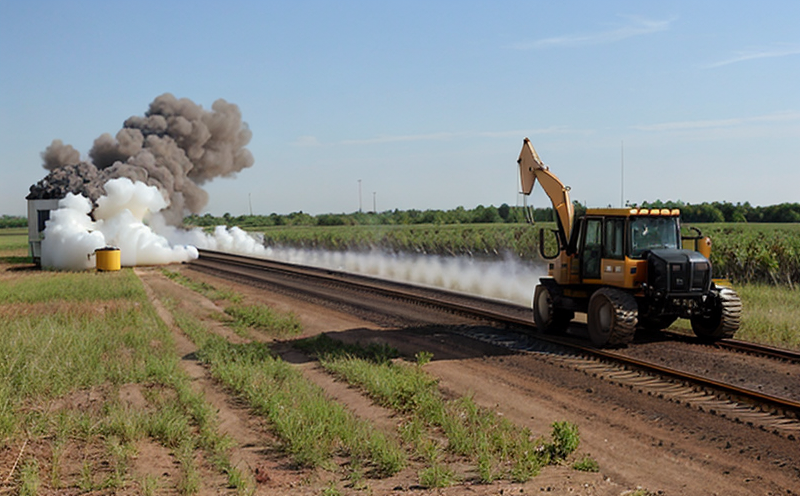BS EN 12721 Resistance to Wet Heat on Furniture Surfaces Testing
The BS EN 12721 standard is a pivotal document for manufacturers and quality managers in the furniture industry. It specifies the test methods for evaluating the resistance of solid wood, veneer, particleboard, and other similar materials used in furniture surfaces to wet heat conditions. This testing ensures that furniture can withstand environmental challenges, particularly in humid environments where moisture and heat could degrade material integrity.
The standard is crucial for several reasons. Firstly, it helps manufacturers ensure product durability and longevity by identifying weaknesses that may arise from exposure to moist heat. Secondly, compliance with this standard is essential for market access, especially in countries or regions that mandate specific environmental resistance standards. Lastly, it supports sustainable manufacturing practices by promoting the use of materials that can withstand harsh conditions without compromising performance.
The testing procedure involves subjecting a specimen of the material to controlled humidity and temperature conditions. The specimen is then exposed to heat for a specified duration before being visually inspected for changes in appearance or physical properties. This process simulates real-world scenarios where furniture might be exposed to humid environments, ensuring that materials do not deteriorate over time.
For quality managers and compliance officers, this test is an essential tool for maintaining high standards of product integrity and performance. It helps in identifying materials that can withstand the rigors of various environmental conditions, thereby enhancing the overall quality and reliability of furniture products. R&D engineers benefit from this testing by gaining insights into material behavior under specific conditions, which aids in innovation and development.
From a broader industry perspective, compliance with BS EN 12721 can significantly impact market access, especially for international trade. Countries that enforce these standards often require manufacturers to demonstrate compliance through certification or testing reports. This requirement not only ensures product quality but also fosters trust among consumers regarding the longevity and durability of furniture products.
For procurement teams, understanding this standard is crucial in selecting suppliers who meet high environmental resistance standards. By specifying BS EN 12721 as a requirement for material suppliers, organizations can ensure that they are sourcing materials from reputable manufacturers who prioritize quality and sustainability.
- Visual Inspection: After the test period, specimens are visually inspected to identify any changes in appearance or physical properties.
- Humidity Control: Specimens are exposed to controlled humidity levels that simulate real-world conditions.
- Temperature Exposure: The specimens are subjected to heat for a specified duration, simulating the effects of prolonged exposure to moist heat environments.
Why It Matters
The importance of environmental resistance testing cannot be overstated in the furniture industry. In regions with high humidity levels, furniture can experience significant degradation if materials are not designed to withstand such conditions. This can lead to warping, cracking, and other forms of damage that compromise both aesthetic appeal and functionality.
Compliance with BS EN 12721 ensures that manufacturers produce products that meet the highest standards for durability and longevity. This is particularly important in regions where the climate poses unique challenges. For instance, tropical areas often experience high humidity levels year-round, making it essential to test materials against wet heat conditions.
From a consumer perspective, furniture that meets these environmental resistance standards is more likely to maintain its integrity over time. This not only enhances customer satisfaction but also supports the reputation of manufacturers and brands. In addition, compliance with such standards can be a key differentiator in competitive markets, where consumers are increasingly aware of product quality and durability.
For R&D engineers, understanding these testing protocols is crucial for developing new materials and designs that can withstand environmental challenges. By incorporating the results of BS EN 12721 tests into their design processes, engineers can innovate products that not only meet but exceed market expectations.
Applied Standards
The primary standard for this testing is BS EN 12721: "Resistance to wet heat on furniture surfaces." This standard provides detailed procedures and criteria for conducting resistance tests. It outlines the specific conditions under which specimens should be tested, including humidity levels, temperature exposure times, and visual inspection methods.
Compliance with this standard is mandatory in many countries that have adopted it as a national regulation or guideline. For instance, some regions require manufacturers to provide evidence of compliance through certification reports or test certificates issued by accredited laboratories. This ensures that products meet the required environmental resistance standards and can be marketed and sold legally.
The standard also emphasizes the importance of material selection in furniture manufacturing. It provides guidelines on how to choose materials that are best suited for specific environments, ensuring that manufacturers can make informed decisions about which materials to use based on their ability to withstand moisture and heat.
Competitive Advantage and Market Impact
- Enhanced Product Quality: Compliance with BS EN 12721 ensures that furniture products are of the highest quality, thereby enhancing customer satisfaction.
- Increased Market Access: Meeting environmental resistance standards can open up new markets and opportunities for manufacturers. Countries that enforce these standards may require compliance as a condition for market entry.
- Differentiation in Competitive Markets: By demonstrating adherence to high-quality testing protocols, manufacturers can differentiate their products from competitors. This can be particularly advantageous in regions where consumers are increasingly aware of product quality and durability.
The impact of compliance with BS EN 12721 extends beyond mere regulatory requirements. It also serves as a benchmark for industry excellence, encouraging manufacturers to continuously improve the quality of their products. This can lead to innovation in material selection and design, ultimately benefiting both manufacturers and consumers.
For procurement teams, ensuring that suppliers meet these standards is crucial for maintaining high-quality supply chains. By specifying BS EN 12721 as a requirement, organizations can ensure that they are sourcing materials from reputable manufacturers who prioritize quality and sustainability.





